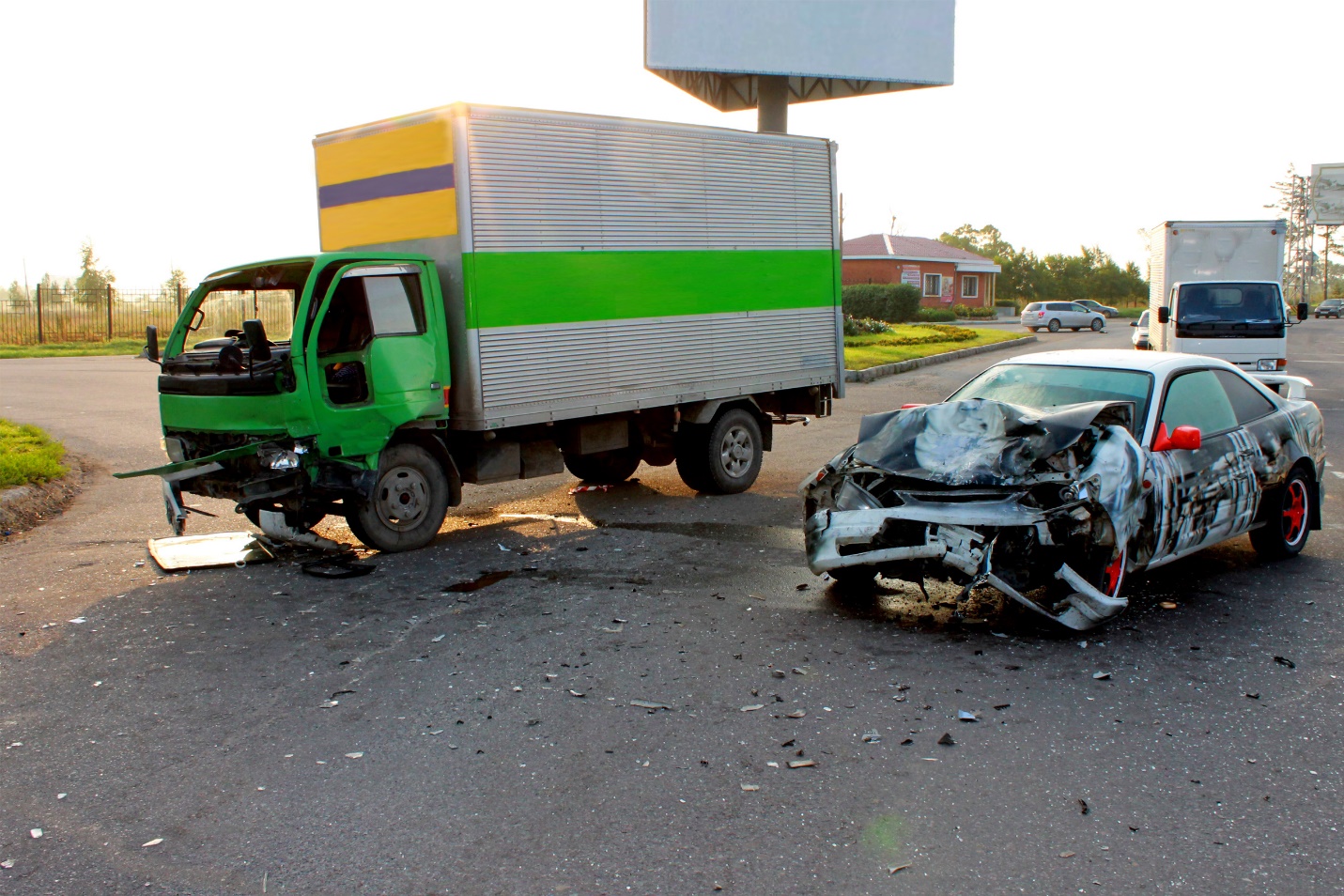Houston traffic is considered to be one of the busiest in the state. There are several interstates (10, 45, 69, and 610), U.S. highways (90 and 290) and state highways (6, 8, and 288) that all crisscross the greater Houston area. In addition, there are numerous roadways that connect different areas of the city.
On these roads with other motorists is an abundant number of semi-trucks. These big rigs are either passing through the Houston area, picking up loads in the area, or making local deliveries. Driving around semi-trucks requires practicing safe driving habits and being aware of how your actions could affect that of the semi-truck driver and either prevent or cause a big rig accident.
To help you avoid and reduce risks of accidents with big rigs and other motorists, our truck accident lawyers want to remind you to practice the following safe driving tips all of the time:
- Always wear your seatbelt. It is a proven fact that wearing seatbelts does save lives and can reduce the extent of injuries during an accident.
- Never drive above the posted speed limit. It can seem hard to follow the posted speed limit when everyone else is zipping past you at excessive speeds. However, driving at or just below the speed limit is safer.
- Maintain a safe following distance. You should make sure the distance between you and the vehicle or semi-truck in front of you is sufficient and provides plenty of space if you have to stop suddenly. If someone pulls in front of you, which does happen, simply slow down and increase the distance.
- Enable new car safety features if equipped. If your vehicle has adaptive cruise control, blind spot detection, or forward collision prevention, make sure these are enabled. While these features do not fully replace being a safe driver, they do help supplement safe driving habits and could prevent an accident.
- Never drive a vehicle that needs to be repaired. If your vehicle has balding tires, needs new brakes, or has other problems that affect its safe operation, do not drive it. You are only increasing the risks of causing an accident.
- Put down the smartphone. Distracted driving accounted for 100,687 accidents out of the 537,475 accidents on Texas roads in 2017, according to information provided by the Texas Department of Transportation. Out of the 100,687 accidents, 2,889 involved serious injuries and 444 deaths.1
- Don’t remain in the left lane on multiple lane highways. The left lane on multiple lane highways is for passing. By remaining in this lane, you are forcing other motorists to pass on the right, which increases the risks of accidents.
- Be aware of aggressive drivers and give them room. If you notice a vehicle weaving in and out of traffic, driving at excessive speeds, tailgating, or speeding up and then slamming on the brakes, put as much distance between you and them as possible.
- Slow down in construction zones. Driving through construction zones can require unexpected lane shifts, tighter corners, and restricted/narrow roadways. Reduce your speed and adhere to the posted construction zone speed limit.
- Do not drive under the influence of alcohol or drugs. According to data collected by the Texas Department of Transportation, someone is injured or killed in an accident involving alcohol about every 20 minutes. In 2016, there were 17,434 DUI accidents in the state, with 1,492 of those occurring in Houston.
Special Safe Driving Considerations Around Semi-Trucks
In addition to practicing the above safe driving tips, there are some special safe driving considerations you must also use when driving around semi-trucks. Semi-trucks are much bigger than your average car, crossover, SUV, or truck. They can weigh anywhere from 10,000 pounds to 80,000 pounds for a fully loaded big rig.
Now, compare this to the average weight of a motorcycle, which is around 604 pounds, and the average weight of most vehicles, which is around 2,871 pounds.4 It is easy to see that, when it comes to an accident involving a semi-truck, in most cases there will be serious if not fatal injuries.
To reduce the risks of being involved in a serious, if not fatal, accident with a semi-truck, remember to practice these additional safe driving tips:
- Do not pass a semi-truck on the right side. The right-hand side of a big rig is one big blind spot. The truck driver cannot see you easily and may not even know you are in the right-hand
- Give the semi-truck the right-of-way when it is changing lanes. If you notice a semi-truck is attempting to change lanes, slow down and let it in.
- Be aware of semi-trucks attempting to merge onto the highway and move over. If you see a semi-truck coming onto the highway, move temporarily into the left-hand lane to allow it sufficient space to get onto the highway.
- When passing a semi-truck, make sure to allow sufficient space before returning to the lane in front of the truck. Big rigs have much longer stopping distances. You need to account for this when changing lanes and getting in front of a big rig. If you need to stop suddenly and there is not sufficient space, you will be rear-ended.
- Move over to the left lane or slow down when passing a broken down semi-truck on the side of the road. If you see a semi-truck has broken down, chances are the driver is around somewhere. You should move to the left lane on a multiple lane road or slow down. For single lane roads, slow down to 25 mph, which gives you plenty of time to stop suddenly if the driver steps out onto the road in front of you.
- Be patient when a semi-truck is passing another semi-truck. Back off and give the semi-truck in front of you some space. It can take several minutes before a big rig can safely pass another one. It has to not only clear the truck next to it but also make sure there is sufficient space in between the other truck before it can switch lanes.
- Don’t let a semi-truck tailgate your vehicle. Unless you are in stop and go traffic that is moving less than 25 mph, you do not want a semi-truck right on your rear. If you need to stop suddenly, it will not have sufficient space to stop without hitting you and causing serious if not fatal injuries.
Be Aware of a Semi-Truck’s No Zones/Blind Spots
Most vehicles have blind spots on the sides where other vehicles can remain hidden. With semi-trucks, there are several more blind spots or “no zones” you need to know about to help reduce the risks of getting into an accident:
- Directly in front of the semi-truck. There is a blind spot of about 20 feet directly in front of the big rig where the driver will not be able to tell if a car is in front of the truck.
- Directly behind the semi-truck trailer. The truck driver cannot see you if you are directly behind the truck and hidden by the truck’s trailer.
- The right-hand side of the truck. As mentioned previously, just about the entire length of the right-hand side is one big blind spot where a trucker will not see you.
- The left-hand side from the rear of the cab to the end of the trailer. Truck drivers will not see you if you are riding in their blind spots on the left side of the trailer. Don’t remain in the spot for long when passing a semi-truck.
Inclement Weather Driving Tips
Driving in inclement weather does require adjusting your safe driving habits. The most common type of bad weather Houston drivers have to face are severe thunderstorms, heavy rain showers, and fog. In addition, there are occasional tropical storms and hurricane conditions that make driving more difficult.
- Slow Down: On wet roads, especially after a dry spell, there will be oil on the roads which makes them slick and slippery when the rain begins. In addition, heavy rain and windy conditions can make operating and controlling your vehicle more difficult. Reducing your speed helps you maintain better control over your vehicle.
- Increase Following Distances: On wet roads, it can take longer to come to a full and complete stop. You should double the amount of space you normally use in dry condition to ensure you have plenty of room to stop safely.
- Turn on Your Headlights: When it is raining, you want to be seen by other motorists and truck drivers. If your wipers are on, your headlights should be on, too.
- Don’t Drive if You Don’t Feel You Can: If it is raining too hard to see or the fog is too thick, then don’t get behind the wheel. If you are already on the road, find a safe area to pull over and wait for conditions to improve.
- Don’t Use Hi-Beams in Foggy Conditions: Hi-beams will make it harder for you to see and should not be used. If you have fog lights, turn those on, since those point downward at the ground and can help.
- Allow for Increased Space When Passing: Semi-trucks will also require longer stopping distances in wet conditions. Make sure to double the space in front of the truck before pulling in front of it.
- Don’t Drive if It Snows: Houston doesn’t get much snow that often, but it does happen. If it does snow and temperatures are below freezing, you should stay off the roads, as icy overpasses and bridges are possible.
While accidents with semi-trucks are not always possible to avoid, everyone can do their part by practicing these safe driving habits to help lower and reduce the risks of serious and fatal accidents.
If you or a loved one has been injured in an accident caused by a semi-truck driver, you may be entitled to monetary compensation to pay for your personal injuries, medical bills, lost wages, and more. Please feel free to contact Schechter, McElwee, Shaffer & Harris, L.L.P. at 713.574.5089 to speak with one of our Houston TX auto and big rig accident lawyers with a free consultation today!
Sources:

 Over 300 Google 5 Star Reviews
Over 300 Google 5 Star Reviews









Leave a Reply